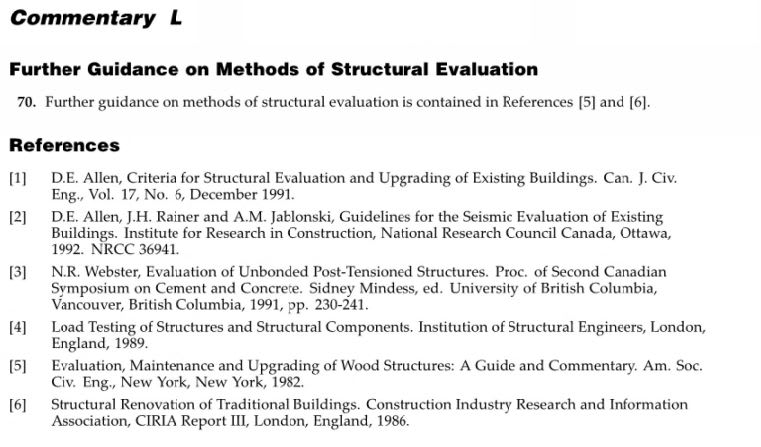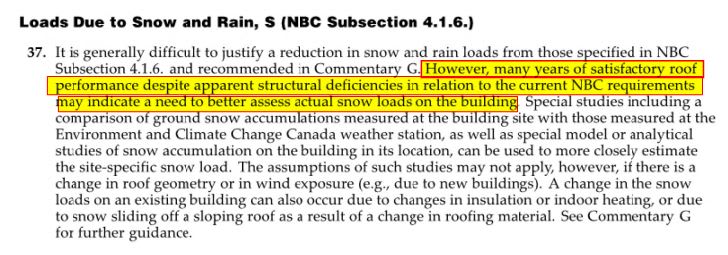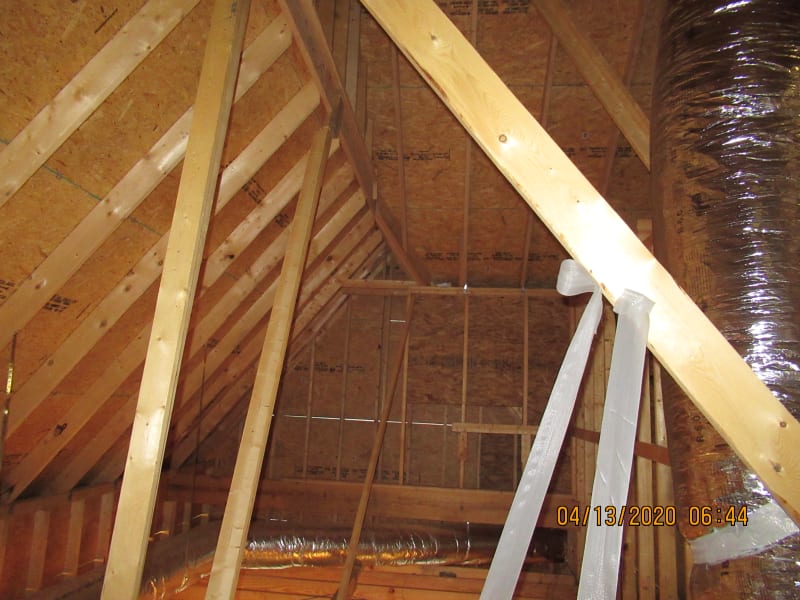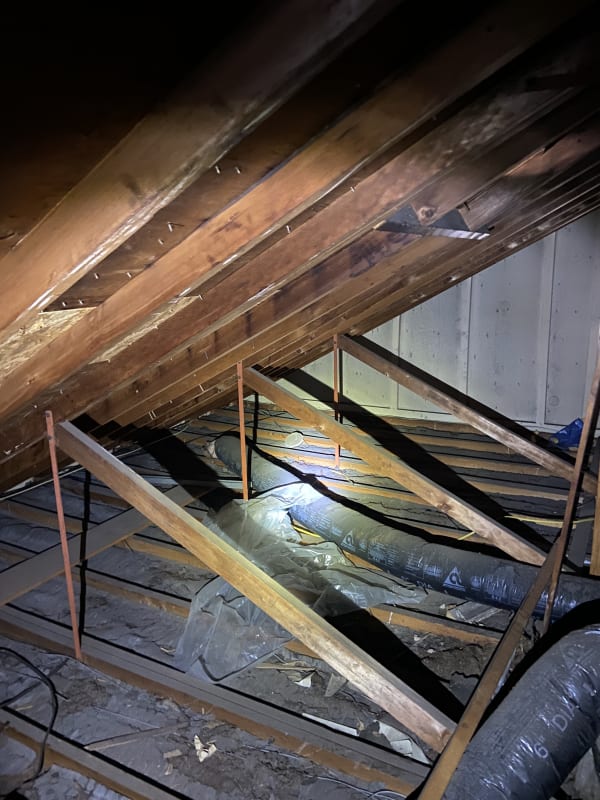Firstly, I feel that a public service announcement is in order here regarding the NBCC Chapter L provisions. Based on the turn that this conversation has taken, one might get the impression that it's principally about justifying lower specified loads. It's not. Rather, it's a wholistic approach that integrates many aspects of structural reliability including:
1) load variation
2) excess structural capacity
3) performance history
4) field / plan verification that details aren't load path abominations
....
....
75) in a very real way, society effectively deciding "meh, maybe we just don't care that much after all for this particular situation".
phamENG said:
I'm going to take my own shot at rephrasing it.
Your point is interesting and valid in my opinion. It is not, however, an accurate restatement of my position. I'll try again, by way of example.
1) Assume a structure located where the code flat roof design snow load is 30 PSF.
2) Assume a structure where analysis has indicated that the roof is only capable of supporting a 20 PSF snow load.
3) With each passing year of successful performance, does it not become increasingly probable that some combination of the following is true:
a) The reserve capacity of the roof has been underestimated and/or;
b) The flat roof snow load specific to
this site and
this building should be lower than the 30 PSF value determined elsewhere in the state?
That's it. Similar thinking is apparent in the NBCC Chapter L provision shown below.
In my opinion, it is not correct to be asking:
"What will be the peak snow load next year at the meteoritical station where we collect our data?"
But, rather.
"What site specific, peak snow load should be considered given that this structure has 20 years of service lift left and we know that it hasn't collapsed in the last 30 yrs even though analysis would indicate that it is 10 PSF under capacity?"
Those are very different questions, the latter incorporating new information only made available with the introduction of a successful building performance history.





